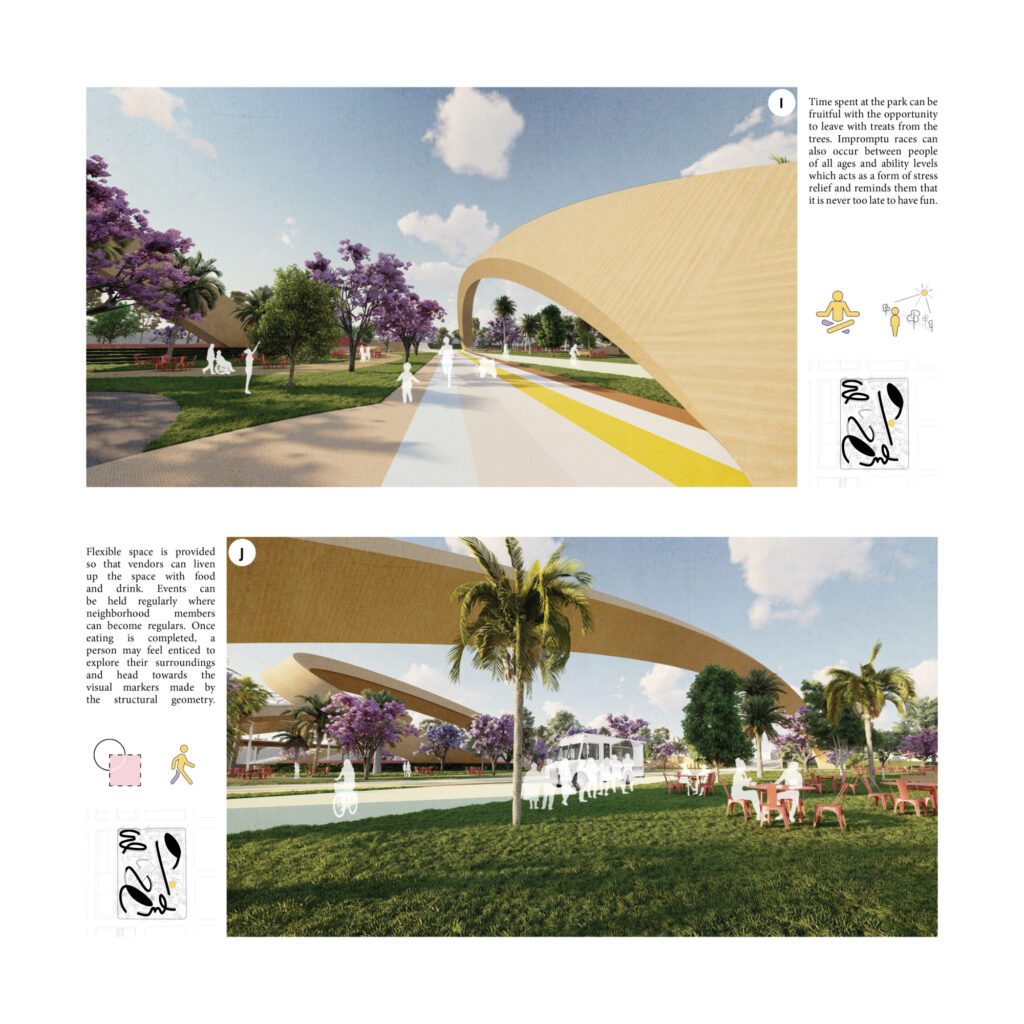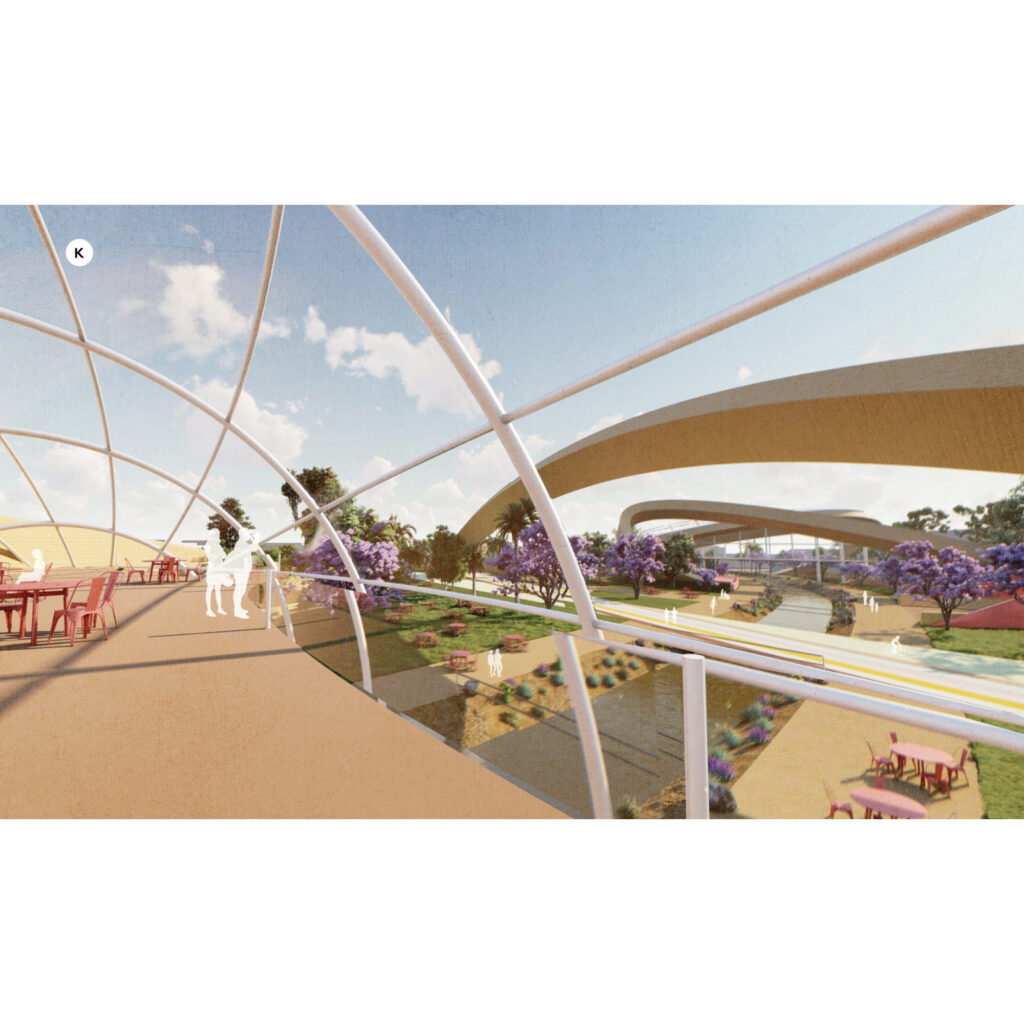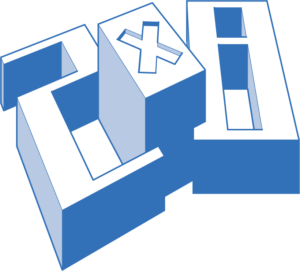
Cesar Tran
NewSchool of Architecture & Design
Vuslat Demircay (Thesis Advisor), Michael Stepner (Thesis Committee Member), Kurt Hunker (Thesis Committee Member), Rebekka Morrison (Thesis Committee Member)
Maintaining active lifestyles has become increasingly difficult with the rise of convenience-based systems and efficient digital technologies. Our daily lives can almost entirely be accessed via the internet and require little to no effort. Using minimal activity, time, or effort to complete any task would be considered efficient and is in line with the concept that humans prefer the path of least resistance. This type of human behavior means we no longer need to move or go anywhere resulting in the inactivity of 50% of all adults in the United States (Centers for Disease Control and Prevention, 2019).
Changing Place seeks to combat this by using persuasive techniques to promote habitual wellness in the form of non-exercise physical activity (NEPA).
Changing Place: A Persuasive Multipurpose Park for Healthy Lifestyles
The places people live can influence their overall lifespan by affecting people’s health and wellbeing. Architecture as a discipline has often proposed new typologies for living but overlooked the opportunity to encourage healthy behavior. People’s lifestyles are determined by a reciprocal human-environment relationship. Therefore, their behavioral norms can only be as healthy as their living conditions suggest. Reliance on physical spaces will not disappear, so architecture must transform and become a medium to promote healthy behavior through persuasion.

Sedentary lifestyles are becoming a standard that may lead to adverse health impacts over time. Surmounting these impacts include daily non-exercise physical activity (NEPA) to support mental, social, and physical health. In many scenarios, providing the space for NEPA may not be enough to encourage participation. Built environment designers can combat this by incorporating persuasive psychological techniques for physical activity. These methods are typically found to stimulate consumerism and addiction, therefore, this thesis reclaims these methods to promote wellness through the suggestion of healthy lifestyles.

A literature review was conducted to better understand the components of a healthy life, the types of psychology employed for increased engagement, and the different architectural environments that encourage NEPA with or without intention.
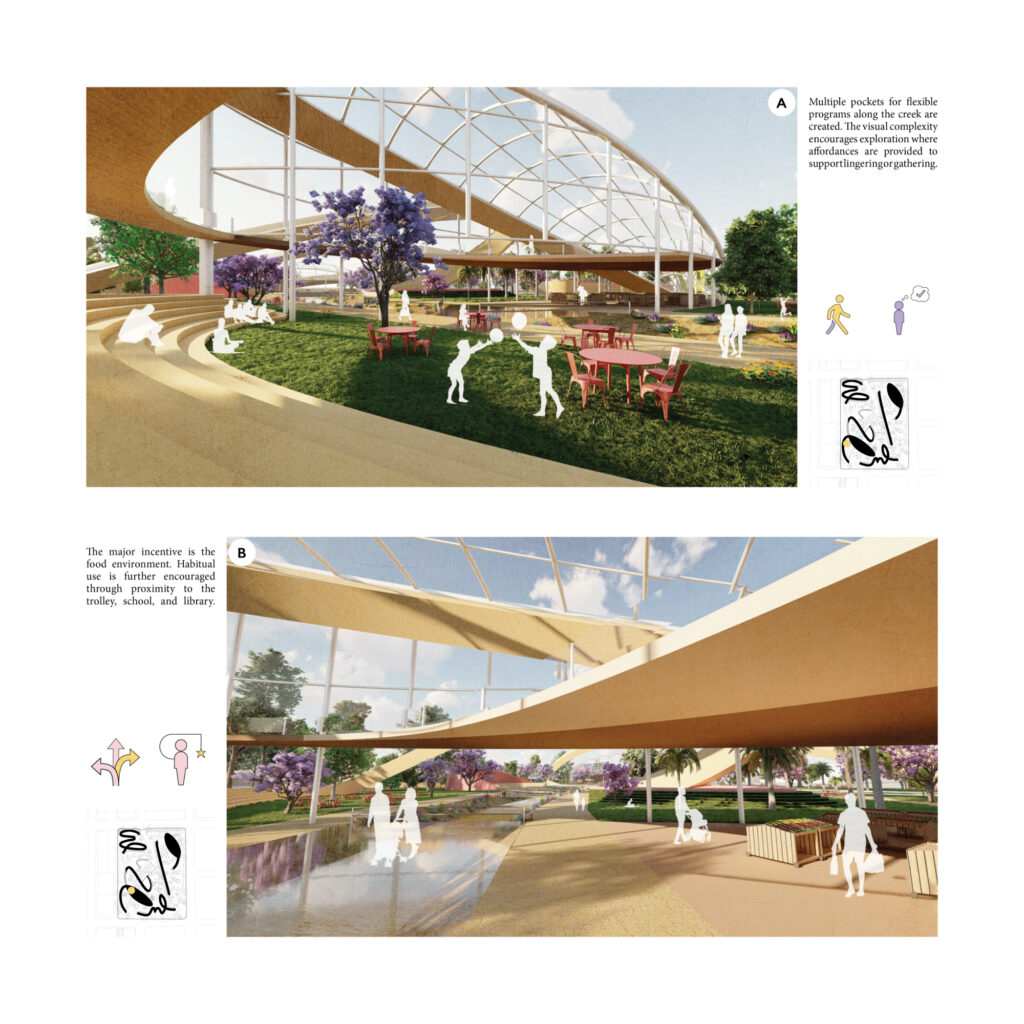
The prescription for a healthy life is not a singular moment, but a collection of activities that are integrated into a person’s daily life. This would include creating a rhythm in tune with natural light cycles, reducing stress, and finding ways to move their bodies naturally.
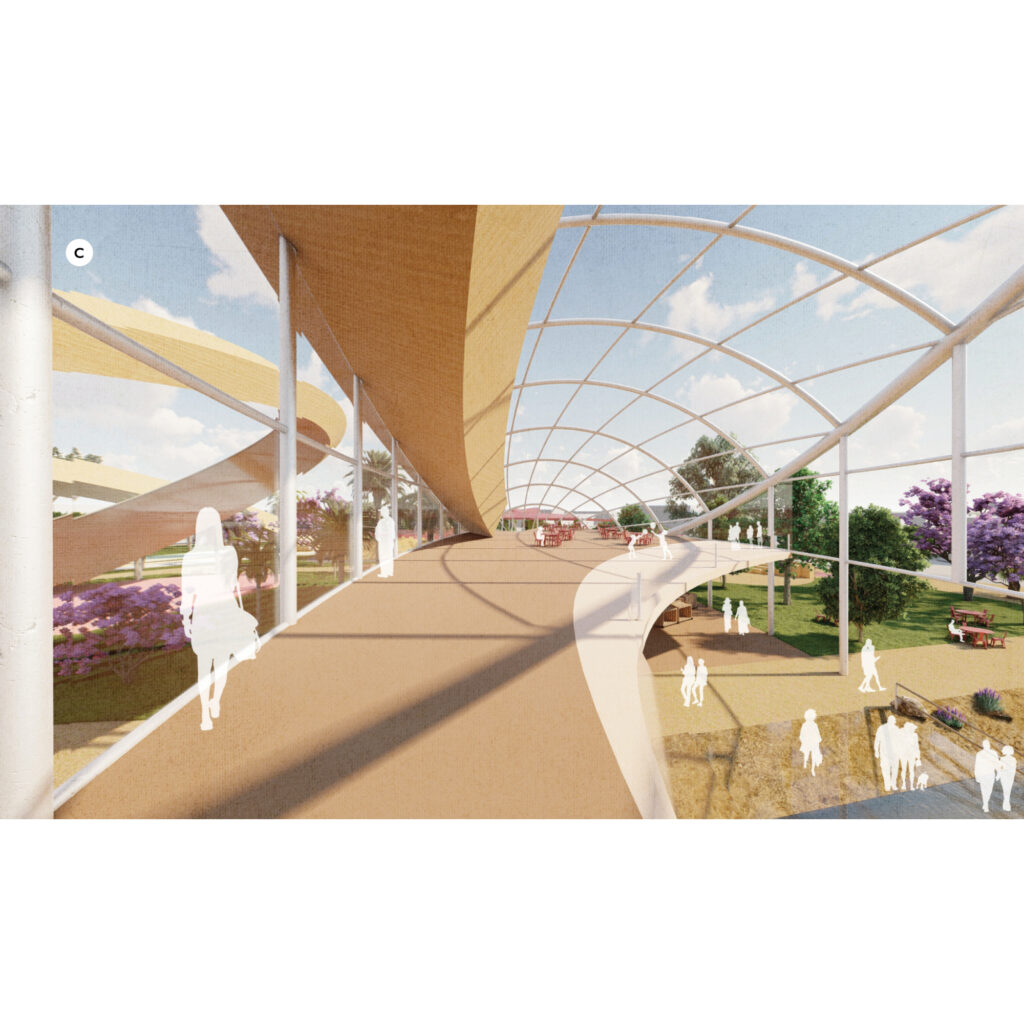
Commonalities found across research within the built environment show that people prefer places that invite them through forms of fun that are sometimes challenging, offer variety, and are familiar in some fashion. Additionally, these places elicit tactics to encourage lingering through interior layouts where the incorporation of seating becomes a signal for a longer period of stay. While it is important to encourage a lifestyle that promotes health through design, designers must be cautious and allow people the opportunity to choose their path as desired.

Enticing people to engage in any activity requires an understanding of people’s needs and wants. Primarily, there must be a motivation where a person can decipher whether or not engaging will benefit them. This can be achieved by making an activity convenient. When activities are convenient, it is more likely to become a habit that is sustained over a lifetime. These habits can further be cued through subliminal priming where the use of symbols, words, or colors can elicit a response. As moments become familiar, the environment or experience must alter slightly to keep a user engaged. To aid this concept, the environment should provide moments for user exploration. This mystery will further encourage repeat engagement by acknowledging that more is to be discovered.
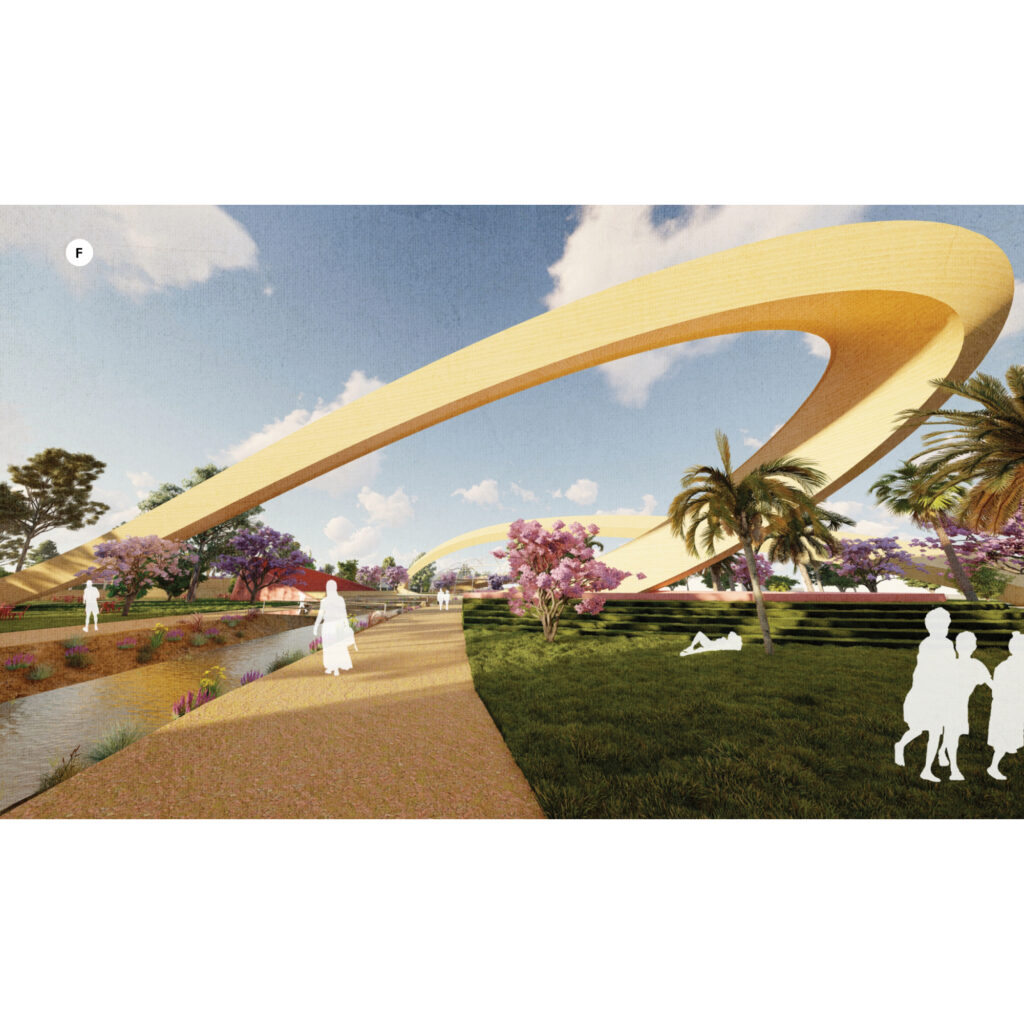
The review culminated with the creation of a framework consisting of nine strategies that can be considered in architectural design for habitual NEPA. Case studies were then analyzed to better understand the usage of the strategies in today’s built environment. The results were then utilized and demonstrated in a theoretical project to encourage NEPA in National City, CA which is known to have high rates of coronary heart disease and stroke.
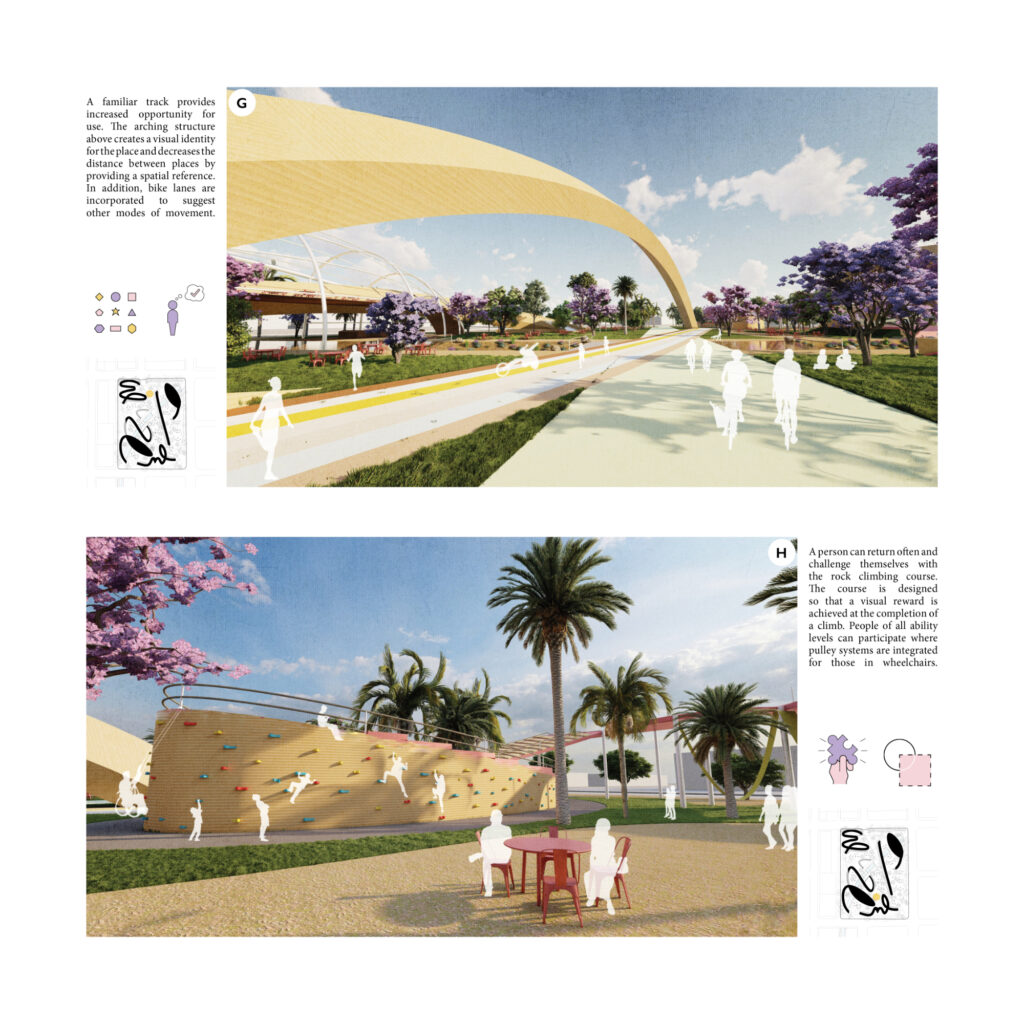
A multipurpose park with flexible food markets and co-working spaces was designed to attract community members to participate in NEPA. The primary reason to journey here is to satisfy a person’s basic needs, sustenance. Pairing this program with multiple incentives associated with stress relief and play creates convenience for users which can lead to a routine over time. This example supports the thesis through framework application and exhibits one of the ways the built environment can encourage healthy routines through the power of persuasion.
